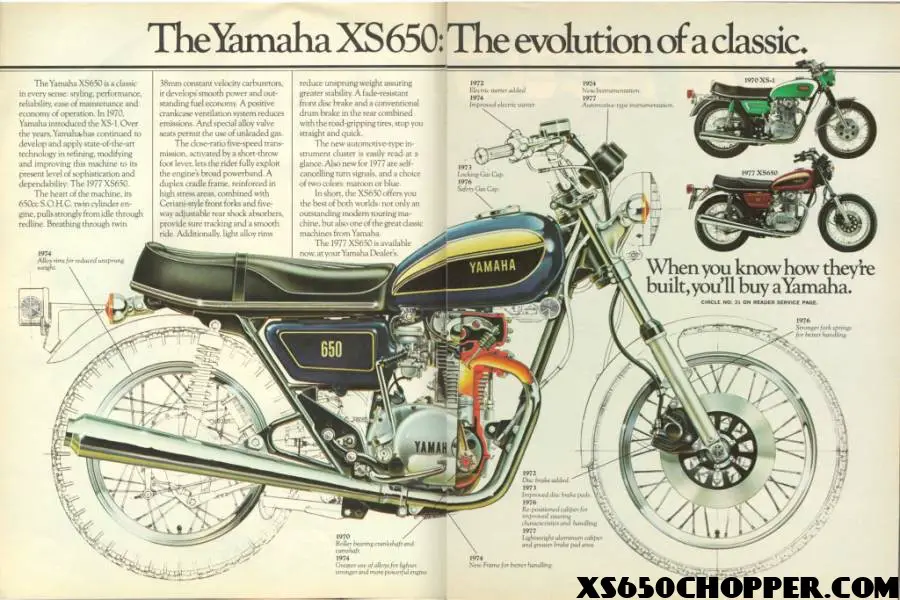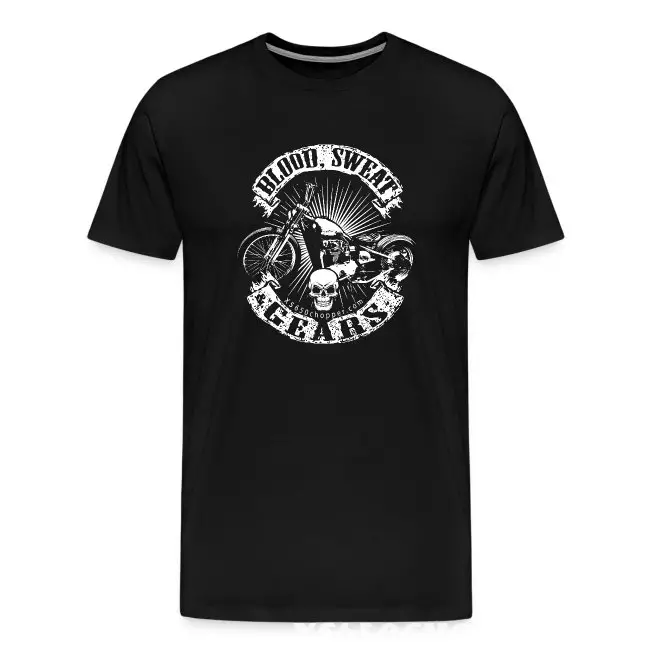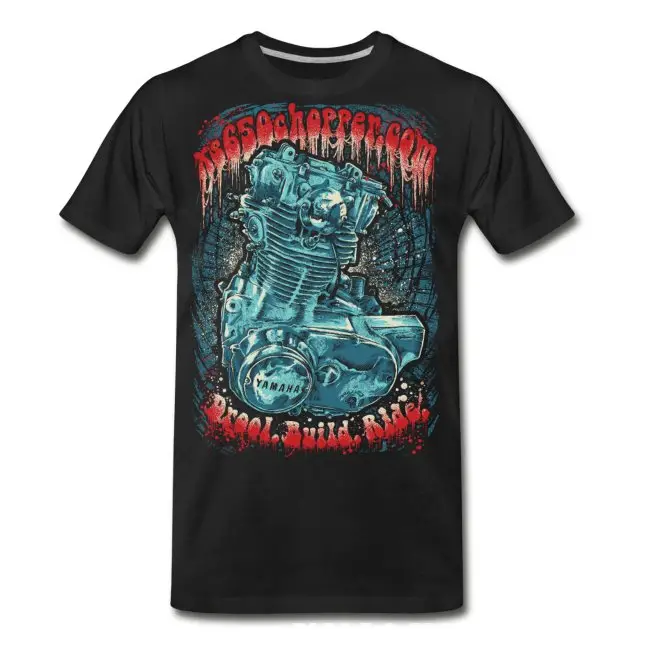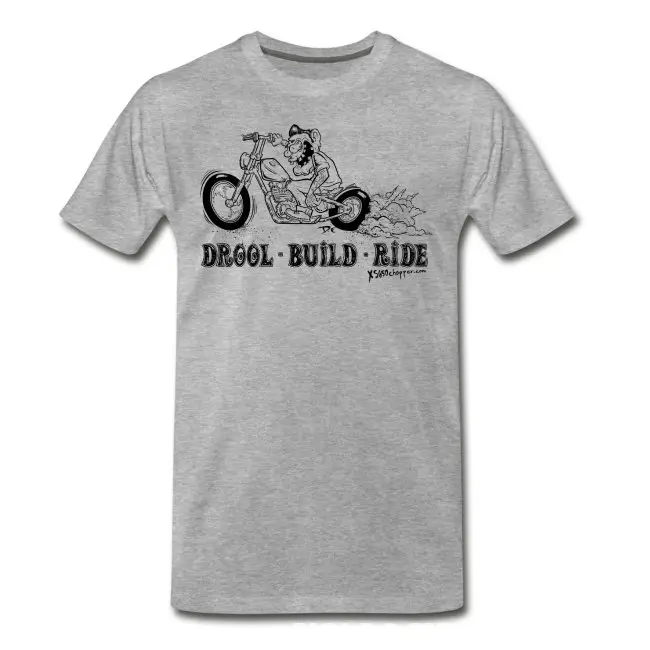The 1960’s was a time of raw, arrogant power. In the halls of government, you had US Presidents throwing down fighting words against Soviet leaders, with warpaths not too far off their trajectories. In the streets, you had protesters clashing with all manner of law enforcement, pushing back against conscription for the Vietnam war with peaceful concerts and the eponymous “flower power.”
In the skies, the Americans were locked in a battle of attrition with the Soviets over who could get a man into space first, and on the ground, that same battle inspired a power war between car and motorcycle companies, of who could go the fastest.
It’s that brash, untamed power that gave rise to the Biker gang culture in America – raucous teens and young adults, fresh out of the Army, looking for something to do in a world that doesn’t need their fighting skill. They needed something that was easy to ride, easy to work on and affordable. Just so happens that a storm was brewing over in the Orient.
Universal Japanese Motorcycles were cheap, reliable, high performing motorcycles from Japan. Unlike the Japanese cars of the day, Japanese motorcycles wormed their way into the hearts of motorcycle riders all over Europe and America. Like a castle built overnight, industry leaders like Harley Davidson, Norton, and Triumph found themselves facing an enemy they had never encountered before, and therefore underestimated.
Riders with no brand loyalty shifted to Honda, Yamaha, Suzuki and Kawasaki because of their superior performance and handling, on top of their more affordable price tags. Little did they know that these machines were meticulously engineered to be legendarily reliable, making maintenance a cakewalk compared to their Western rivals.
But no matter how much they tried, the UJM was not the kind of motorcycle that took well to customization. The lines of the bike were never meant to be messed with, and their engines were best left stock, or close to stock. That is, until the Yamaha XS650 launched.
What Year Did The Yamaha xs650 come out? | No fanfare
When it first launched in 1969, the XS650 was your typical British-beater UJM. It had the conventional UJM seating position, and the overall shape of it was as you’d expect for a UJM. It differentiated itself from its contemporaries with its 654cc parallel twin, but its sights were set on British bikes like Norton’s Commando 750 and Triumph’s Bonneville T120, both of which had the same kind of engine as the XS650. It even matched the two bikes in size, having a total length and wheelbase that is smack in the middle of the Commando and the Bonneville. But because it was Japanese, the XS650 was more affordable than its British counterparts. That price difference made it appeal to all manner of buyers and riders.
As it stood though, the Yamaha was the new kid on the block, so it needed to have a couple of tricks up its sleeve to go toe to toe with those established brands.
Is the Yamaha xs650 Reliable? | Same as the old boss
Universal Japanese Motorcycles used the best technology available to them. Like most other motorcycles of the time, the XS650 used a unit construction for the gearbox and bottom end. Unlike other motorcycles of the time, though, they split their crankcase horizontally instead of vertically. What this meant was that the engine wouldn’t leak oil over time, and it made the engine easier to assemble and mount into the frame. This meant that the XS650 didn’t eat through its 2.5 Liters of oil like its contemporaries, and even more than that, it paved the way for similar construction to the point that most modern performance bike engines use horizontally split crankcases.
Yamaha xs650 Problems | No such thing as perfect
The XS650 is a well-sorted bike, with little in the way of issues in reliability or rideability, but it didn’t start out that way. It would have been foolish of Yamaha to not resolve any issues the XS650 had over the course of its near 20-year lifespan.
At the start, the bike was plagued with vibrations due to the unique, 360° firing order of its parallel twin, making it have the same kind of harshness as a big thumper. Yamaha was able to solve this using vibration dampers on the engine mounts, but the reputation, at least among journalists at the time, stuck around until the end of its production run.
How the XS650 changed motorcycles forever | Eureka moment
But this design was not something new. Derived from a design by Japanese company Hosk which itself was derived from German company Horex, the engine in the XS650 dates all the way back to the 1950’s, with Yamaha getting control of it in their takeover of Hosk parent company Showa Corporation in 1960.
Yamaha taking over the Showa corporation meant they could quickly manufacture a modern parallel twin engine, since Hosk developed a 500 cc unit twin back in 1955.
This along with the XS650’s timing chain meant one thing: Riders thought it was a Japanese knockoff of a British Parallel Twin. It wasn’t immediately noticeable, how these advancements changed how these bikes performed, but it became glaringly obvious when the first service interval rolled around. Not only was the bike consuming less oil, but the timing was also bang on where it needed to be, no adjustment necessary. And it would stay that way for many thousands of miles, at least. That meant that when its contemporaries had been sent out to pasture, the XS650 chugged along happily all the way until it ended production in 1985.
Yamaha xs650 Best Year | The Summer of ’77
While the XS650 started production in the late 60’s and ended in the mid 80’s, it was in 1977 that something just clicked, almost as if the stars aligned and bathed the Yamaha factory in Japan in stardust. Typical Japanese attention to detail found minor issues with the motorcycle, and they’re dealt with swiftly. How’s that for Japanese efficiency, right?
It was a combination of a dual front brake disc upgrade, refined engine performance, and dampened engine vibrations that made people stand up and take notice. Nowadays, people in the market for a cheap, reliable, and easy to work on motorcycle look at the XS650 and say, “That works.” Having half a million units doesn’t hurt the parts hunt efforts either.
The XS650 is a bike that really strokes the ego of the rider, and lets the rider experience the joy of motorcycling without breaking a sweat.
That’s not to say the XS650 underperforms, mind you. With tuners getting them all the way from the original 653cc to well over 1 Liter of displacement, the XS650 is wonderfully overbuilt, which makes it suitable for amazing levels of power for its time. It is by no means the fastest bike out there, but for the XS650 enthusiast, sometimes that isn’t the point.
How to customize your XS650 | Bespoke
One of the advantages of having half a million units is that there’s enough blank canvasses for those who want to stand out in a crowd. After all, when there’s half a million of you who all look alike, how do you stand up and say, “This one’s mine”?
The greatest part of being such a mainstay in the community is that there are about as many ways to customize this motorcycle as there are hours in the day.
Whether you want a bobber, chopper, scrambler, tracker or café racer, there are no shortage of shops that can make your vision reality. If you’re the type to do it yourself, there’s also no shortage of kits available to make the job easier if you’re a beginner.
XS650 Scrambler? Can it climb
The Universal Japanese Motorcycle style has always had something of a scrambler vibe to it, and the XS650 is no different. With longer travel suspension and off-road tires, no one would guess it was never made to go off road. The XS650 has also been raced in flat track racing owing to its renowned reliability, so a tracker build is something that can be explored. There are certainly bikes to take inspiration from if that’s where you’d like to head.
XS650 Bobber Or XS650 Chopper? Bob and weave
The XS650 has also been used to make choppers and bobbers, and it’s that stubby wheelbase that appeals to some riders. Almost like it’s a half-a-Harley, which isn’t a bad thing. Plus, that peanut fuel tank makes this bike look much bigger than it is.
The XS650 has also been a blank canvas for painters, often coming up with amazing paint jobs that look like they jumped straight out of the 70’s, with tons of metalflake and psychedelic color combinations that really catch the eye. On the other hand, they also paint them in quiet colors that almost blend into the background. White and Silver come to mind, which accentuate the lines and detail of the builder’s work, bringing attention to them instead of the paint.
XS650 Café Racer | From Café to Café
Another common thing one can do with the XS650 is make a café racer out of it. Café racer kits exist for nearly every motorcycle, and the XS650 is no exception. From bikini fairings and rear seat deletes, to full builds by a custom shop that was given creative freedom, there’s very few bikes that wears its modifications quite like a café racer XS650. Part of that romance, presumably, comes from the fact that the XS650 was designed to take on the Commando 750 and Bonneville T120, which were popular café racers in 60’s Britain.
New for 1969: Just how much is the XS650 worth?
If there was ever a list of motorcycles from the 70’s that a beginner can pick up and ride from the get-go, the XS650 is probably at or near the top of that list. It was cheap when it was launched, at just $1,245 back in 1970, or just a little under $9,000 in today’s money. That made it one of the most affordable middleweight bikes in the segment back in the day.
Today, a collector can pick up a mint condition example for about the same, but someone who wants a project can expect to pay anywhere from $1,000 to $3,000, almost as if the XS650’s prices are frozen in time.
The XS650 is a bike that is ideal for people getting into riding and customizing. The simplicity of the mechanicals, and the almost-signature one kick start nature of the bike make it ideal for beginners, who may not have developed their sense of mechanical sympathy.
You can beat on it and forget a couple of service intervals without worrying about it destroying itself. In a way, it’s as close as you can get to a classic bike that behaves like a modern bike, but not getting a new bike that’s only retro-styled. Minimal maintenance requirements, decent performance, and a unique sensation that, apparently, only the characteristic vibration of the XS650 can give make it perfect for developing an interest in the motorcycle community.
There are so many different types of custom XS650s out in the world, and we do mean the world. From Indonesia to Indiana, and from Britain to Bahrain, the XS650 has found a place for itself in every niche and style you can imagine. From hardtail chops with all the glitter and metal flake, to scramblers tackling the muddiest of hills, there’s no limit to what you can do with an XS650. That means making it your own is easy, cheap, and rewarding.
One thing that you may have also noticed about the XS650 is something that has absolutely nothing to do with the bike itself, and that’s the community that surrounds it. With 500,000 units made, it was impossible for the riders to find each other and decide to flock together. Birds of the same feather, after all, right? The faithful sing the praise of the XS650 to no end, and as someone uninitiated to the community, you get the distinct feeling that that loyalty is well-earned on the bike’s part. They may have other motorcycles, but the XS650 just naturally puts a smile on their face.
If you’re reading this article as an introduction to the XS650, we won’t tell you it’s the perfect classic bike for you, because there’s no such thing as a perfect bike. Everything will always have a downside, including classic bikes like this. The XS650 is, however, a great bike because it ticks so many boxes for so many kinds of riders. It’s affordable because it wasn’t expensive to begin with. It’s easy to find because they made so many. It’s easy to maintain because there isn’t much to go wrong. And it’s a great base bike for you to go wild with to make it an extension of your personality. That kind of combination is hard to find, especially with newer, more complicated motorcycles.
It’s all things to all men, and while that doesn’t make it perfect, it’s what makes it great.






